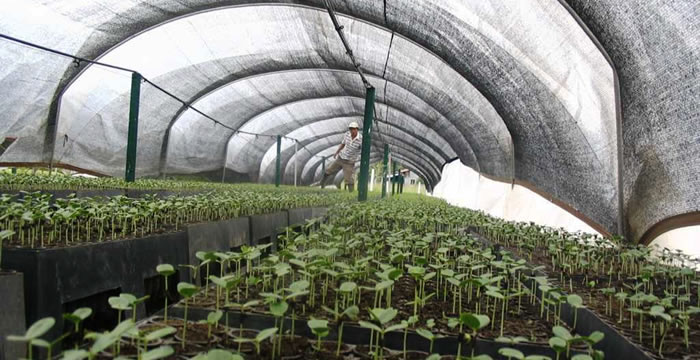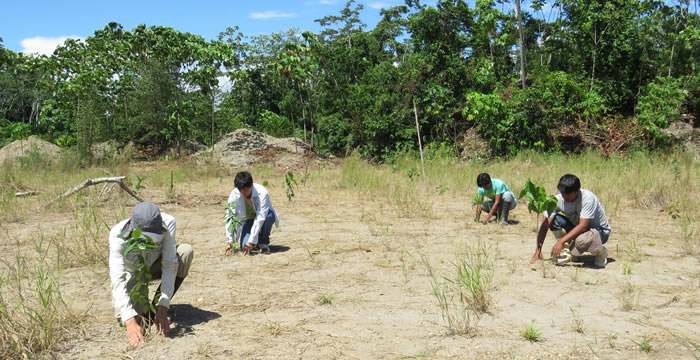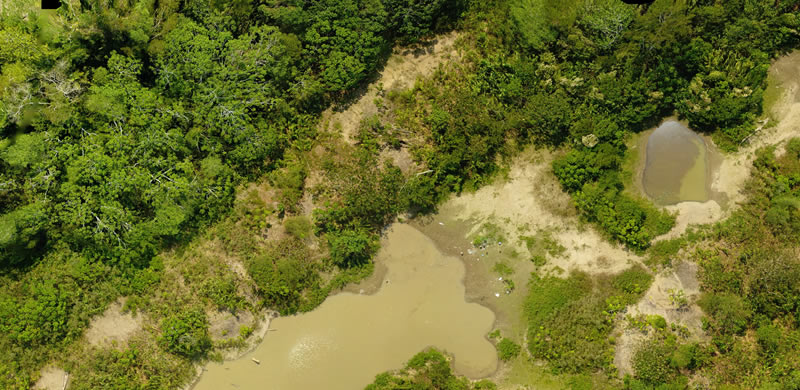The Centro de Innovación Científica Amazónica (CINCIA) seeks to generate scientific knowledge to allow for better decision-making in Madre de Dios, Peru. To this end, CINCIA develops research and studies in response to the Amazonian disruptions, disseminates and communicates its findings to decision-makers and the community, democratizes knowledge, and generates opportunities for sustainable development.
Reforestation and Restoration of Tropical Landscapes
Studies that examine the techniques of reforestation and restoration in Madre de Dios are lacking. This lack of scientific knowledge requires a research-based approach to ensure the success of large-scale restoration initiatives.
Goals
Establish a network of 42 hectares of experimental plantations along an ecological and socioeconomic gradient covering the jungle of Cuzco and Madre de Dios.
Methods
Nurseries and reforestation plots will be set up with various native and exotic species for ecological restoration and commercial reforestation efforts.
Several silvicultural treatments will be evaluated on their ability to improve soil fertility and their development of forest plantations.
Environmental remediation treatments aimed at reducing the toxicity of mercury and other heavy metals are being tested.

Partners
Local government agencies and the owners of land where mining activity has taken place.
Wake Forest University, Instituto de Investigaciones de la Amazonía Peruana (IIAP), and Universidad Nacional Amazónica de Madre de Dios (UNAMAD).
Duration of the project: 3 years
Start date: June 2016
Environmental Mercury
Mercury (Hg) is a naturally occurring– potentially toxic– element that poses a risk to human health and ecosystems. There are natural sources of mercury that are part of the mercury cycle; however, it has been shown that human activities, such as deforestation and mining, greatly increase the concentration of this metal in both terrestrial and aquatic ecosystems.
The presence of mercury in the Amazon region has been studied since the 1980s– mainly in Brazil– due to the exploitation of gold. In Madre de Dios, gold mining has been growing rapidly since 2000; however, there are very few studies that systematically assess the presence of mercurcy and its risk to the region and its inhabitants. Therefore, the impact assessment of mercury pollution in the region has several limitations.

Goals
Create a risk assessment for the prevention of future environmental and human health threats in relation to mercury exposure.
Generate scientific evidence to better understand the flow of mercury in Madre de Dios in order to identify the impacts and implications for human health and ecosystems.
Create a space for dialogue between various public and private institutions at the municipal, regional, and national levels, that share information to help facilitate the implementation of public policies aimed at minimizing the damages posed by mercury.
Methods
Implementation of an Analytical Laboratory in the region, of national and international reference that supplies the needs for the monitoring of the mercury.
Collection and analysis of biotic and abiotic samples to evaluate spatial and temporal changes in mercury concentrations.
Evaluation of the impact and dispersion of mercury on ecosystems and public health in Madre de Dios.
Provide scientific information that contributes to the implementation of public policies aimed at minimizing the potential damages of this element in the region.
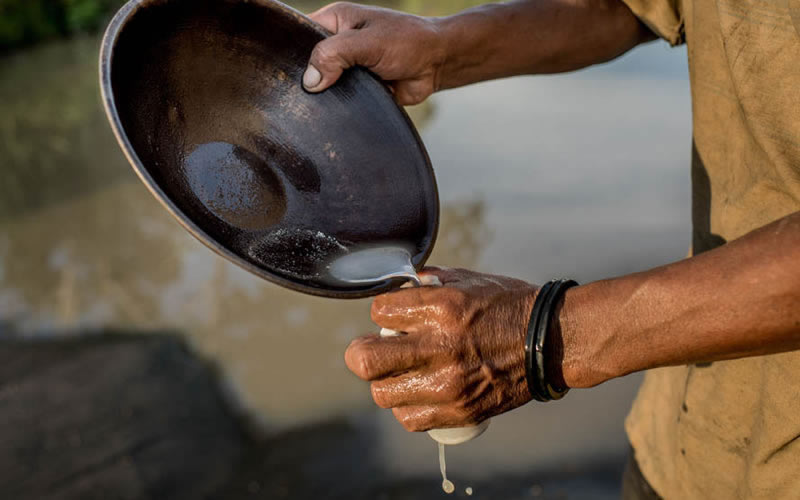
Location
Headquarters of the Research Institute of the Peruvian Amazon-IIAP
Kilometer 20 of the Interoceanic Highway Puerto Maldonado-Cuzco.
Intelligent Remote Sensing and Drones for Conservation
Drones are small, piloted, remote-controlled aircrafts that are used in conjunction with GIS (geographic information systems) to study the productive, extractive, and conservation sectors. Drones are one of the most advanced technological inventions that combine robotics, aeronautics, and electronics.
Goals
Analyze and map the data collected in Madre de Dios districts developed by the Centro de Innovación Científica Amazónica (CINCIA).
Enhance the acquisition of spatial data information in a more up-to-date and accurate way with the help of drone imagery.
Methods
Drones will produce high-resolution satellite imagery to update thematic maps and generate new maps in 3 dimensions.
Overflights will be conducted with drones to micro-zonify degraded areas by mining, plan reforestation actions, and evaluate the development of forest plantations.
Biochar for Soil Restoration
Mining tailings have contaminated vast areas in Madre de Dios and other surrounding Amazonian regions leading to soil deterioration, water quality losses, and a decrease in vegetation cover. Recently, an important body of evidence has shown bio-carbon as a potential remediation tool. Bio-carbon seeks to increase nutrients and water retention capacity in the soil therefore improving acidity and stimulating the microbial functions of soil.

Goals
Install a bio-carbon processing plant to support further research on recovering degraded areas using bio-carbon.
Methods
CINCIA has established strategic alliances with national and foreign institutions as well as with bio-carbon processing experts.
CINCIA works to strengthen individual networks in order to encourage the share of knowledge on bio-carbon.


Measures
Ensure that bio-carbon produced from different sources of raw materials is available in Madre de Dios.
Facilitate the application of biocarbon in order to aid soil properties on reforestation plantations.
Partners
Instituto de Investigación de la Amazonia Peruana (the Research Institute of the Peruvian Amazon)
Grupo Alimenta (Alimenta Group)

Landscape Baselines
Both land use patterns and the tropical forest landscape have been changing as a result of economic, political, cultural, and environmental factors, leading to changes in the extent and conservation of terrestrial and aquatic ecosystems. In addition to agriculture and livestock, gold mining has emerged in recent years as an important factor in the conversion and degradation of forested land and environmental pollution. This line of work at CINCIA involves the comparison of degraded areas with pristine areas, which seeks to improve knowledge on aiding ecosystems in recovering from severe disturbances such as mining.
Goals
Generate scientific knowledge to help identify the conservation value and threat levels of ecosystems in order to generate public land management policies.
Assess the natural regeneration capacity of terrestrial and aquatic ecosystems after gold mining over a given timeframe.
Generate a framework that standardizes biotic and abiotic parameters to measure the level of impact and regeneration potential of degraded areas abandoned by gold mining.
Methods
CINCIA is establishing baseline data on the following:
Soil
Hydrobiology
Water and Sediment Quality
Natural Regeneration

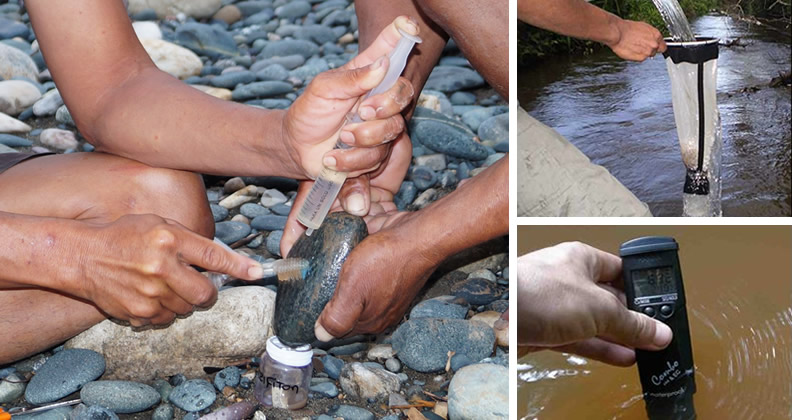
Measures
The threat to terrestrial and aquatic ecosystems in the region of Madre de Dios.
The potential for natural regeneration of vegetation in areas degraded by mining.
The level of soil degradation by different types of mining operations.
The state of water quality, sediments, and hydro-biological resources in bodies of water left abandoned by mining.
Partners
Local government agencies and owner’s of land where mining activities have occurred.
Wake Forest University
Universidad Nacional Amazónica de Madre de Dios (UNAMAD)
The Peruvian Amazon Research Institute (IIAP)

Outreach and Education
Through collaboration with local communicators and educators, CINCIA seeks to generate best practices for the communication of scientific knowledge to the general public and thus improve the scientific capacity of Madre de Dios. To this end, CINCIA works with educators, journalists, and policymakers to better communicate scientific findings, participate in scientific practices, and raise awareness of environmental happenings in the Madre de Dios region.
The promotion of scientific capacity among local scientists is a necessary, but insufficient step to improving the scientific capacity of the general population. To attract future generations of current scientists and politicians, workshops and scholarship programs offered by CINCIA raise awareness of local resources, the human impact on those resources, and local and international scientific advances seeking to improve the land and the means of subsistence of individuals in Madre de Dios.

Goals
Improve the communication of CINCIA’s research using best practices in scientific communication, teaching, and learning.
Analyze the scientific knowledge, skills, and attitudes of various populations in Madre de Dios to best identify the resource and education needs of the region.
Methods
Create and strengthen strategic alliances with regional and national educators and communicators.
Collaborate with educators, communicators, and policy makers to encourage the participation in scientific work throughout the region.

Measures
Pre- and post-assessments on scientific knowledge, skills, and attitudes of all CINCIA workshop participants.
The exchange of scientific research to aid in policy making decisions.
The use of best practices in teaching and communicating between scientists and individuals beyond the scientific community.

Partners
Instituto de Investigación de la Amazonía Peruana (The Research Institute of the Peruvian Amazon)
Professors, universities, journalists





